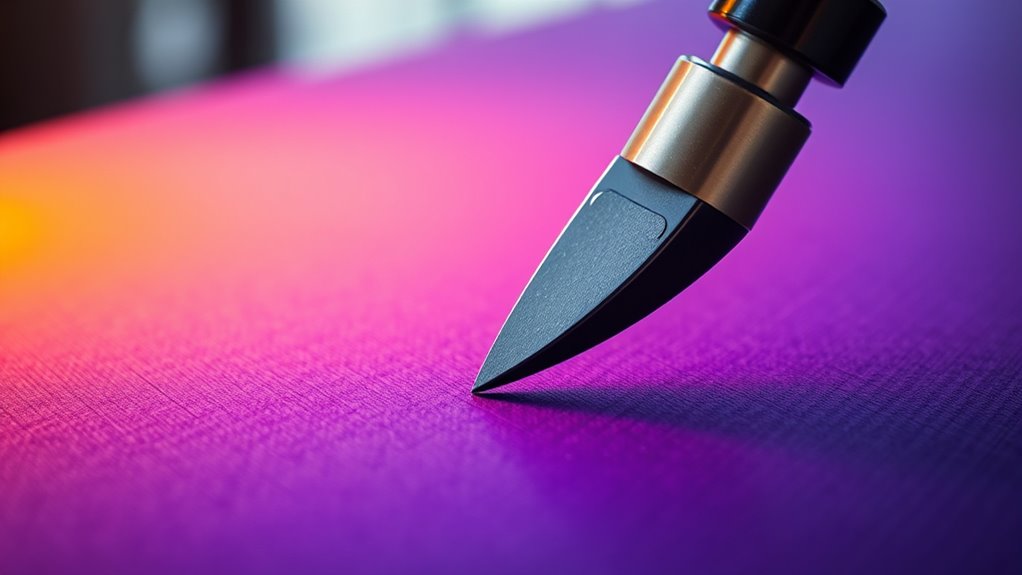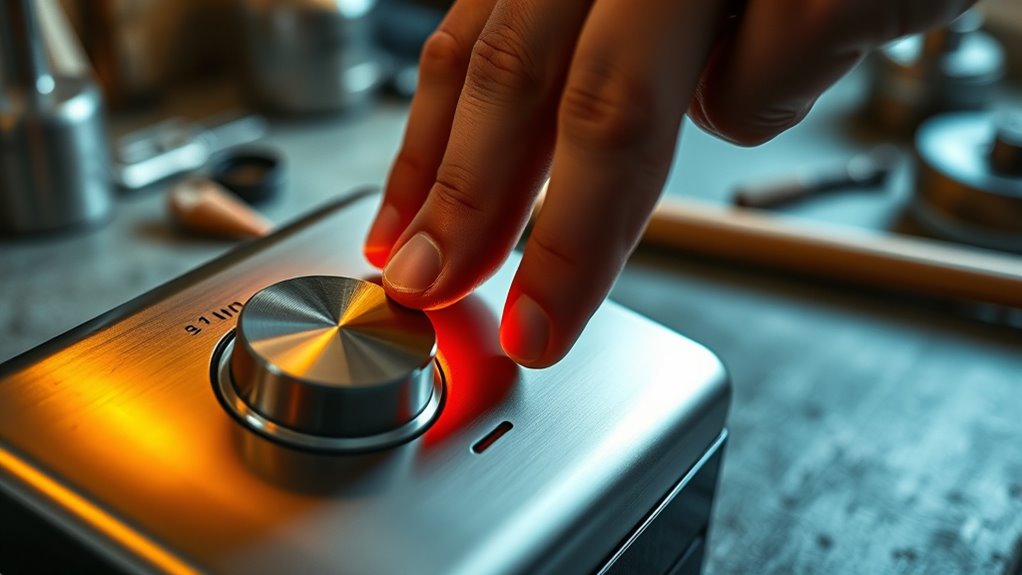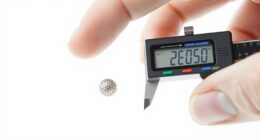To create smooth gradient shading with variable heat control, start with low heat and gradually increase it as you work. Use tools with adjustable settings and move steadily to avoid hotspots. Build your shading in layers, increasing heat or pressure carefully to deepen the progression. Be mindful of how your material responds and practice different techniques. Mastering this control lets you achieve natural, seamless gradients—if you keep exploring these methods, you’ll improve your skills even further.
Key Takeaways
- Gradually increase heat settings while shading to create smooth, seamless gradient transitions.
- Use tools with adjustable heat output to control temperature precisely during shading.
- Move the tool steadily and evenly across the surface to prevent hotspots and uneven shading.
- Layer shading in incremental steps, adjusting heat and pressure to deepen the gradient gradually.
- Experiment with different materials and techniques to understand their heat response for optimal control.

Creating smooth gradient shading often requires precise control over heat application, especially when working with materials like solder or heated tools. Your success hinges on understanding how heat distribution impacts the shading process. If heat is uneven or applied too quickly, the transition between shades becomes harsh, ruining the delicate visual effect you’re aiming for. To master this, you need to develop effective shading techniques that allow you to manipulate heat gradually, creating seamless gradients that appear natural and professional.
Master heat control for seamless, professional gradient shading in your projects.
A key aspect of achieving smooth shading is managing heat distribution carefully. Instead of applying a large amount of heat all at once, you should start with a lower temperature and gradually increase it as needed. This controlled approach ensures that the material responds predictably, allowing you to blend shades smoothly. Using tools like adjustable soldering irons or heat guns with variable settings helps you fine-tune the heat output, giving you more control over the shading process. With practice, you’ll learn how to move the heated tool steadily across the surface, distributing heat evenly and avoiding hotspots that could cause uneven shading or damage.
Shading techniques come into play when you’re working on creating subtle transitions between light and dark areas. One effective method involves building up the gradient in layers, gradually increasing the heat or pressure to deepen the shading. It’s essential to be patient and make small adjustments rather than trying to achieve the perfect gradient in a single pass. This incremental approach allows for more precise control over the shading intensity and ensures that the transition appears smooth and natural. Additionally, using tools like shading brushes or textured surfaces can help diffuse heat more evenly, reducing harsh lines and promoting softer transitions.
As you develop your skills, pay attention to how different materials respond to heat. Some surfaces may require less heat or shorter application times to achieve the desired gradient, while others might need a different technique altogether. Experimentation is essential—try varying your shading techniques and adjusting your heat settings to see what produces the best results. Remember, consistent practice enhances your ability to control heat distribution, making your gradient shading more refined and professional over time. Proper heat control mastery is crucial for creating intricate, seamless gradients that elevate your work to a new level of craftsmanship.
Frequently Asked Questions
Can This Technique Be Used on Different Materials?
Yes, you can use this technique on different materials, but you need to take into account material compatibility and surface preparation. Some materials respond better to heat and shading techniques, while others may warp or get damaged. Always make sure proper surface prep to improve adhesion and prevent defects. Test a small area first to see how the material reacts to the heat control, adjusting your approach accordingly for the best results.
What Safety Precautions Are Necessary During Heat Control?
You should always wear safety gear like heat-resistant gloves and goggles to protect yourself from burns and sparks. Keep a fire extinguisher nearby and work in a well-ventilated area to reduce fire hazards. Never leave the heat source unattended, and make certain your workspace is clear of flammable materials. These precautions help prevent accidents and ensure safe handling during heat control processes.
How Long Does It Take to Master Gradient Shading?
Ever wonder how long it takes to master gradient shading? It varies, but with consistent practice, you’ll see progress in a few months. Skill development depends on your technique adaptations and dedication. You might start blending smoothly in weeks, yet perfecting subtle progressions takes time. Remember, patience is key. Keep experimenting, learn from mistakes, and gradually, your shading will become more refined and natural.
Are There Specific Tools Recommended for Precise Heat Adjustment?
Yes, for precise heat adjustment, you should use tools with adjustable temperature regulation and reliable calibration settings. Look for features like digital displays or fine-tuned dials that let you control the heat accurately. Regularly calibrate your tools to guarantee consistent temperature. This way, you can achieve smooth gradient shading and avoid damage caused by uneven heat, giving you better control over your work.
How Does Ambient Temperature Affect the Shading Process?
Think of ambient temperature as the stage lighting for your shading performance. It influences how heat flows and how smoothly your gradient forms. When the environment is too warm or cold, it can throw off your temperature regulation, causing uneven shading or delays. To achieve flawless results, you must master ambient influence, adjusting your heat control carefully and consistently to keep the process steady and vibrant.
Conclusion
Don’t let the complexity hold you back—mastering gradient shading with variable heat control is simpler than you think. By experimenting with different heat levels, you’ll achieve smooth, professional-looking progressions every time. Some might worry it’s too difficult or time-consuming, but with patience and practice, you’ll see quick progress. So, embrace the process, trust your heat control skills, and watch your artwork transform with stunning depth and dimension. Your creative potential is just a heat adjustment away!









